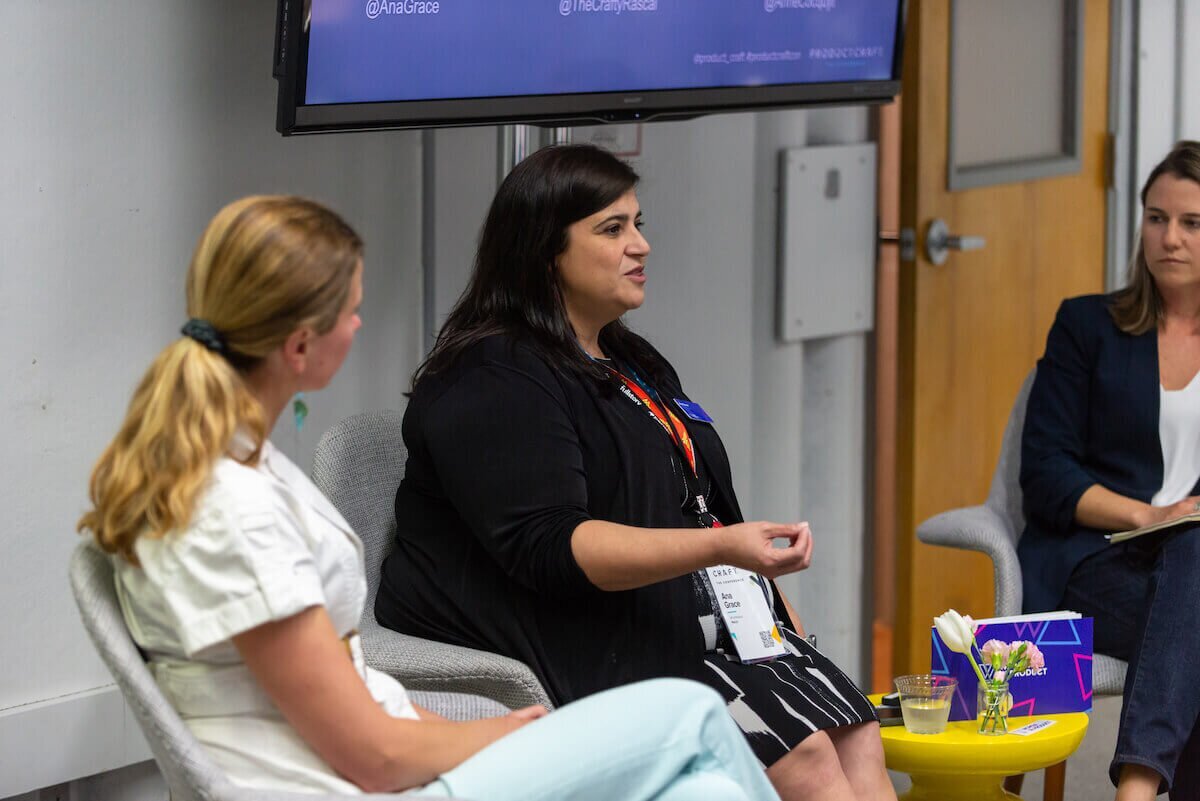Traditional industries like retail, insurance, and banking may have a lot to learn from the software industry to evolve into digital enterprises, but they have plenty to teach as well. Especially when it comes to diversity and inclusion.
Take retail, for example. Long before the software industry was reporting the demographics of its leadership and boards, retailers diversified their stores and corporate leadership to represent the people in the communities they serve.
In 2005, Macy’s boasted a 50/50 split of men and women on its board of directors. Today, a woman serves as chief digital officer, and VP of PM Ana Grace counts five women on her team of seven product managers. That’s still not typical for a product team, she told a group gathered for a workshop hosted by Women in Product at ProductCraft: The Conference in San Francisco on May 9. But it certainly shows progress.
Survey Says …
Women in Product hosted the session to spotlight the results of its recent advocacy survey and brainstorm new ways to grow and advocate for more representation of women in product. Joining Grace was former Women in Product executive director Anne Cocquyt and Elena Luneva, head of product at Nuna.
Women in Product has built a massive following since its 2016 start. It counts more than 14,000 members and 35 chapters around the world. The organization’s annual conference, coming this November, attracts more than 5,000 attendees each year.
Yet, the data still shows a long way to go before women match men in product roles. 72 percent of survey respondents said women hold fewer than 50 percent of the PM roles in their organizations; 69 percent said fewer than 25 percent of product leadership roles are held by women. Their combined eNPS score was 11.

Grace had a lot of advice to lend the room—she’s spent her career in retail. She recently left Walmart, where a new returnship program recently brought 30 people—mostly mothers—back to engineering and product jobs after taking time off to be with their children. Walmart partnered with an organization called Path Forward to create this internship-like program, and found it so successful that they’re expanding the program this year to open up to 100 technical positions for people returning to work.
Prior to Walmart, Grace worked at Best Buy, where company data proved that a mix of males and females on the sales floor led to a massive increase in sales.
Combating Bias in Hiring
There are some practices she took away from her work at those companies and has brought to Macy’s. First, she and her team hold themselves accountable to ensuring they don’t hire without a diverse slate of candidates. She uses writing tools like Textio to analyze job descriptions for any inherent bias.
And she spends a ton of time on LinkedIn and the phone. She sets aside time every week to research and reach out to a diverse set of product managers, regardless of whether she’s immediately hiring. “I’m taking calls all the time just to get to know people,” she says.
Cocquyt and Luneva had advice to share too, some detailed in the findings of the report. Luneva always looks beyond her own network to boost the diversity of job candidates. Her recruiting partner, for example, is lesbian and ensures jobs are posted on a variety Slack channels and groups like Lesbians Who Tech. She’s also willing to hire outside of San Francisco to find diverse talent—she’s hired designers in Barcelona and engineers in Russia.
Luneva also suggests using the tried and true PM practice of A/B testing recruiting messages and job descriptions to ensure you get the right mix of candidates for a job.
During the interview process, she always asks candidates who else they’d like to speak with beyond the selected interview panel. “It shows we care about them as a person,” she told the group. And that’s ultimately good for the candidate experience.
Tours of Duty
A compelling idea suggested by all three women was the idea of offering a “tour of duty” for existing employees curious about a career change into product. Offer a chance to work in product for a month or a quarter, or to take on a cross-functional project alongside the product team. Ensure the team has the ability to mentor and coach that person. The goal is to focus on one core skill during that time, and then evaluate whether they are still interested in the role and if there’s a business need after that sort of trial period.
Cocquyt pushed the audience to define diversity as “including all of us,” pointing to other biases like hiring someone who shares similar interests such as working out at SoulCycle. And Grace called out ageism as a challenge for tech as big as race. A phrase to watch out for during the recruiting process for in both cases is “culture fit,” either bad or good.
Cocquyt asked each woman to share a final piece of advice for the room.
Grace challenged the attendees to speak up, be brave and aggressive—when you become a champion for diversity, you create a groundswell, she says.
Spoken like a true PM, Luneva encouraged the group to take one step a week, starting with an MVP. Then, “improve and discover and make it better,” she said.
For more best practices and advice, check out the full study.
![[object Object]](https://cdn.builder.io/api/v1/image/assets%2F6a96e08774184353b3aa88032e406411%2F16b6f2565d1d4a5585db322386f9be7f?format=webp)
![[object Object]](https://cdn.builder.io/api/v1/image/assets%2F6a96e08774184353b3aa88032e406411%2F728d67faa5f64299b8f8f0b138881fb5?format=webp)
![[object Object]](https://cdn.builder.io/api/v1/image/assets%2F6a96e08774184353b3aa88032e406411%2Fc08c4160a2724c4fa3d365eb43791b09?format=webp)
